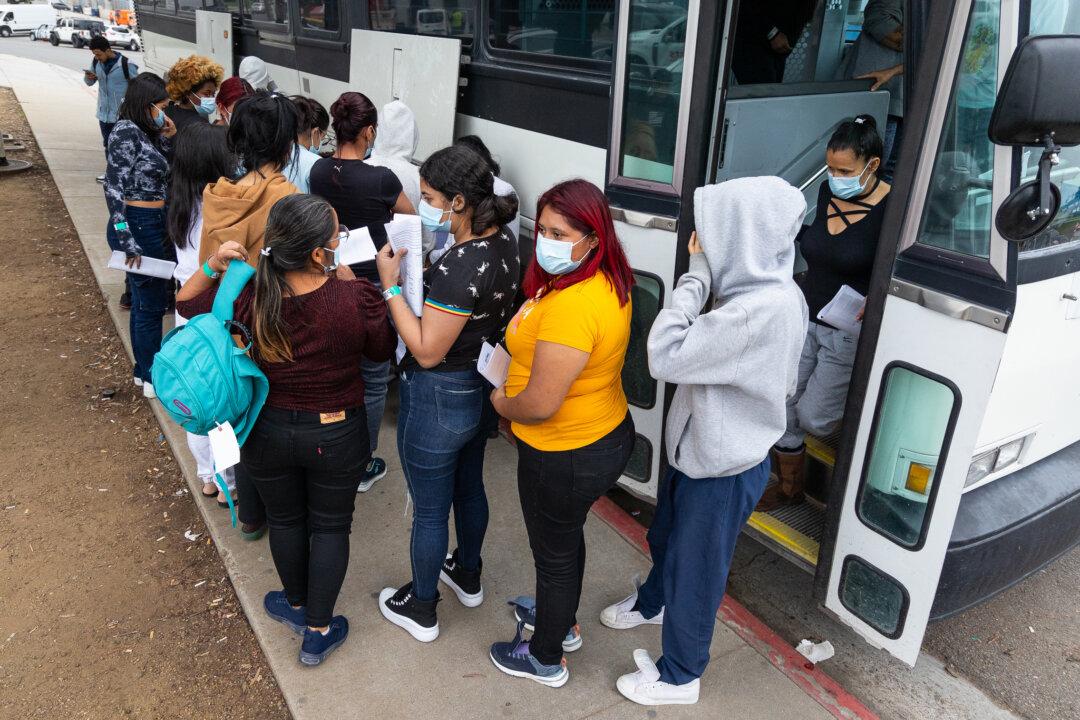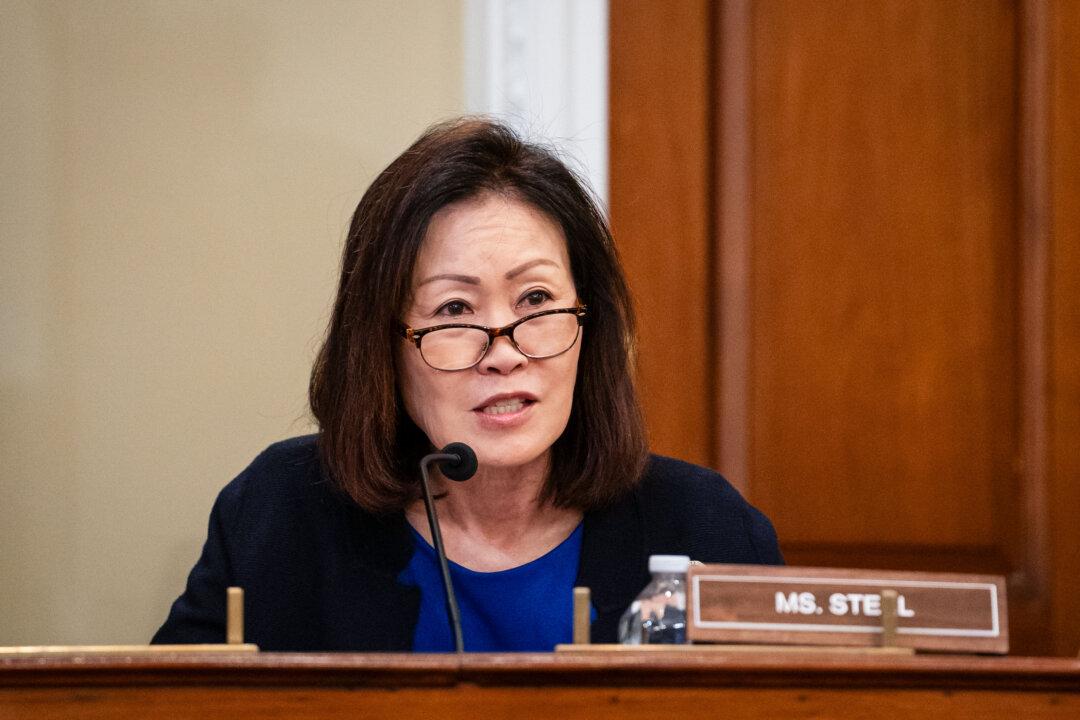The San Diego County Board of Supervisors approved a plan on Feb. 27 for the development of a long-term illegal immigrant transfer site, just days after a nonprofit group—which had leased space at a closed school in San Diego’s City Heights neighborhood to provide services for illegal immigrants—ran out of funding and closed operations.
The board voted 4–1 in favor of securing federal funding for the new site to prevent more illegal immigrants from being released in the county.
Board Supervisor Jim Desmond, dissenting from the majority vote, said that the existing illegal immigration process has a root problem—admitting more individuals into the nation without the infrastructure to accommodate them—that needs to be solved.
“I refuse to endorse the establishment of additional shelters as a band-aid solution to a much deeper problem,” Mr. Desmond said in a statement after the vote. “Instead, I urge the president and our congressional delegation to prioritize comprehensive immigration reform to address the root causes of this crisis.”

The proposed plan aims to establish a one-stop facility offering assistance with basic needs and onward travel support for individuals, according to county officials.
According to officials, the facility would accommodate up to 500 people and would ideally be positioned either near the border or in central San Diego for convenient access to transit hubs.
However, opting for the former illegal immigrant transfer site would cost less, estimated at $12 million, compared to $345 million for acquiring and constructing a new location downtown, where the real estate price tag is higher. The cost of annual operation isn’t included in the proposed plan.
The vote came after reports of a significant number of illegal immigrants being released by the U.S. Border Patrol in San Diego despite a nonprofit servicing illegals having shut down because of a lack of funding.
The organization “was vital and prevented tens of thousands of individuals from being stranded in San Diego without the support needed to continue their journey,” Kathie Lembo, president and CEO of SBCS, formerly known as South Bay Community Services, said in a Feb. 22 statement.
Ms. Lembo said that almost all of the illegal immigrants—99.5 percent—who were served by the organization proceeded to leave the county.

The county has allocated $6 million to SBCS since October 2023 to manage a “migrant welcome center” at a closed school in San Diego.
However, it closed earlier than anticipated after its funding, which was intended to last until the end of March, was fully depleted.
The county’s plan for an illegal immigrant transfer site was prepared after supervisors voted on Feb. 6 to develop a long-term plan to assist illegal immigrants.
According to Mr. Desmond’s statement at a recent supervisors’ meeting, the county was receiving 300 to 400 illegal immigrants per day, but the number has increased to about 800 to 900 per day.
“This surge is not merely a matter of numbers; it is a glaring symptom of a system failing to enforce the laws designed to safeguard our nation’s borders,” he said.
Supervisor Joel Anderson also voiced his concerns about the recently ended welcome center operation at the meeting.
“Current estimates project that San Diego County will be seeing up to 1,000 migrants dropped off by Border Patrol every day unless federal action is taken,” he said. “This is unacceptable for our communities and inhumane for those seeking a better life.”

Seeking Federal Intervention
Some board members suggest that seeking federal assistance is crucial, as there are limited options locally.During the Feb. 27 meeting, Supervisor Monica Montgomery Steppe said the illegal immigrant crisis squarely rests with the federal government, highlighting Congress’s failure to pass legislation to bolster border security.
“We’re left with very limited options,” she said.
Mr. Anderson also expressed frustration, saying that he could no longer tolerate any further street releases of illegal immigrants in his district.
“My greatest concern is for my constituents and for the asylum seekers who are abandoned in our community,” he said.

He suggested urging President Joe Biden to temporarily close the U.S.–Mexico border in response to street releases, which encountered opposition from several board members.
Board Chair Nora Vargas said at the meeting that shutting down the border would harm the community and its economy.
“Let’s put aside the feelings and emotion. Let’s talk about practicality,” Ms. Vargas said. “Closing the border is not an option in a binational region that is thriving, that is economically integrated [and] culturally integrated.”
Instead, the board unanimously agreed to send a letter to congressional leaders urging them to collaborate with the president in passing bipartisan immigration legislation.





